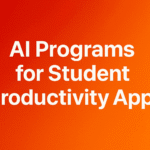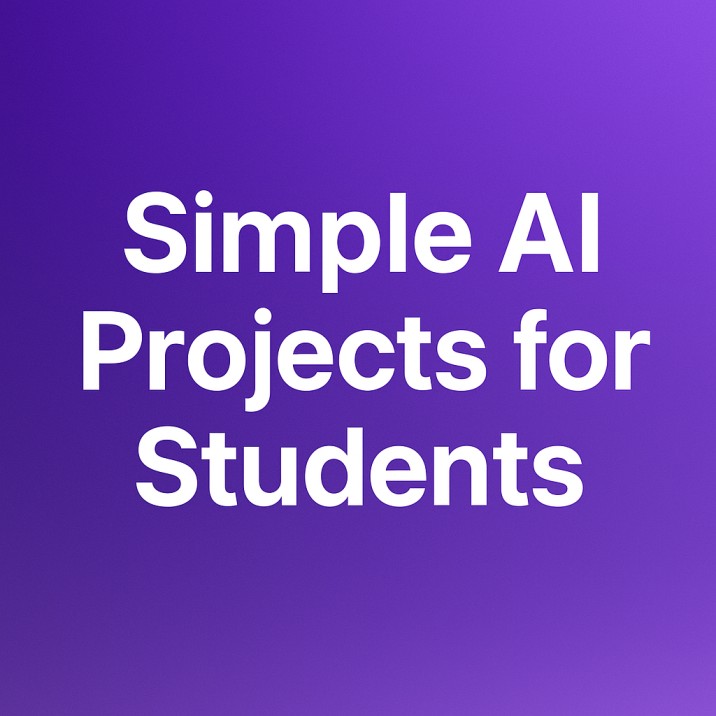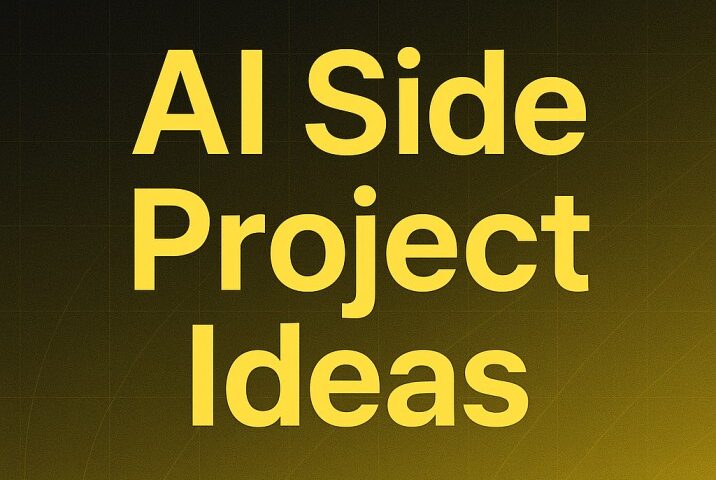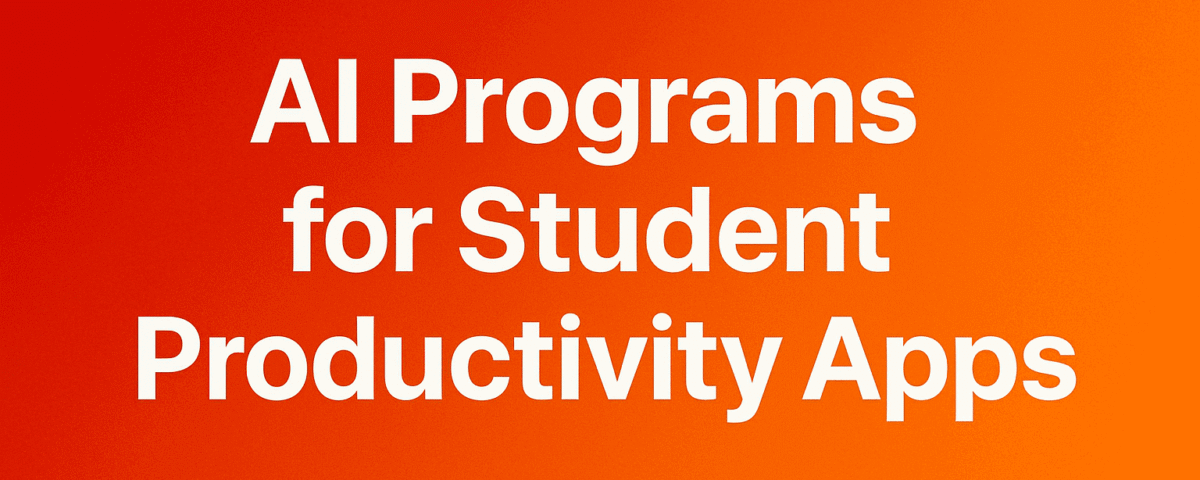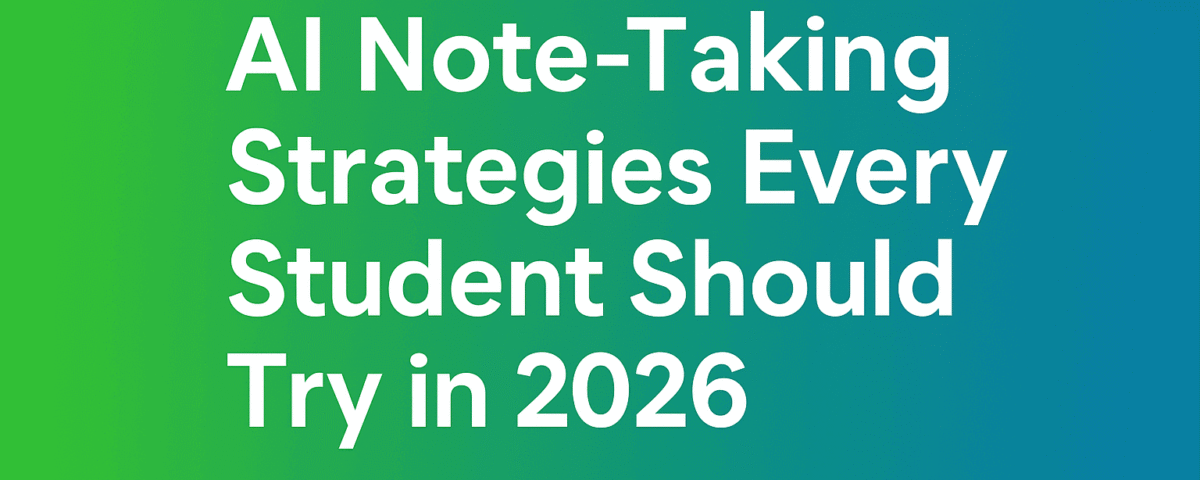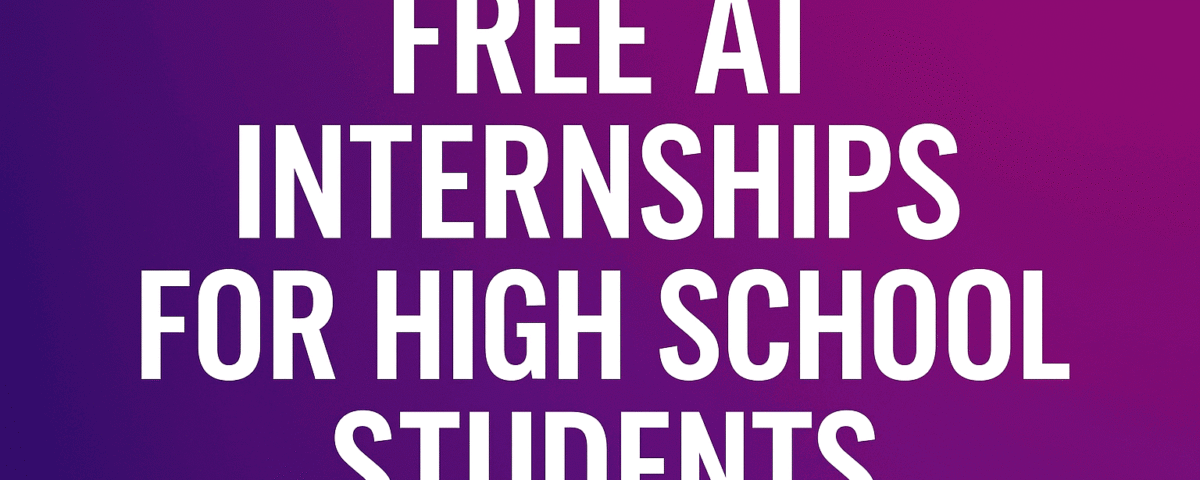Want to try AI projects without heavy math or paid software? You can. This guide shows how to start with easy AI Projects for Students using free tools, short timelines, and clear steps, all built for beginners. You will see Python and no-code options, planning tips, ethics, and how to present results that make sense.
We will cover language, vision, and data projects, all sized for a week or less. Beginners and teachers can pick one project, follow the plan, and finish with a working demo. Ready to learn by doing? Choose one idea and commit to finishing it this week.

What You Need to Start Simple AI Projects (No Cost or Low Cost)
You do not need a fancy setup. A laptop or Chromebook, Wi-Fi, and a browser are enough for most projects. If you can manage tabs and save files, you can build an AI demo.
Use this quick checklist to start today:
- A laptop or Chromebook with Wi-Fi
- A free Google account for notebooks and storage
- 5 to 10 hours across a week
- One small dataset in CSV or an image folder
- A goal you can explain in one sentence
Keep the scope small. Aim for a working version first, then improve. Use Python in the browser or simple no-code tools. Save your files in Drive or GitHub so nothing gets lost.
If you want project ideas and context, you can browse practical lists like DigitalOcean’s machine learning side project ideas for beginners. For a broader overview of common beginner topics, see GeeksforGeeks project ideas. Use these only for inspiration, then narrow your plan to a clear, testable goal.
Stay focused on one skill at a time: classify text, read digits, or build a small chatbot. These easy steps add up. By the end of the week, you will have a demo you can show and explain. That is the heart of easy AI projects.
Explore Beginner AI Projects for more hands-on tutorials and examples.
Free Tools That Make Setup Easy
- Google Colab: runs Python in the browser, no install needed.
- Python with scikit-learn: great for classic models like Naive Bayes or SVM.
- NLTK: helpful for simple text cleaning and tokenizing.
- TensorFlow: good for small models and demos on low-power devices.
- Scratch: block coding for logic and simple AI-style behavior.
- Teachable Machine: build image or sound classifiers in your browser.
- Kaggle: find datasets and simple notebooks for reference.
- Storage: keep notebooks in Google Drive or push code to GitHub.
Tip: make a folder named with your project title. Store the dataset, notebook, and a README. Add screenshots of results so your progress is easy to share.
Find Safe, Useful Datasets for Students
Choose small, labeled datasets that match your goal. Labels are the answers you want to predict, like spam or not spam. Features are the inputs, like words in an email. The target is the label you aim to predict. These elements form the fundamental concepts of machine learning models and data.
Good sources include Kaggle and the UCI Machine Learning Repository. Look for clean CSV files with clear columns. Avoid personal or sensitive data. Small, well-labeled datasets help you finish faster.
Simple options:
- Spam vs. not spam emails
- Movie review sentiment
- MNIST images of digits 0 to 9
- Basic weather data
Open the CSV and skim the first 20 rows. Check for missing values, odd symbols, and blank labels as part of basic data preprocessing. If it looks messy, pick a cleaner version. Keep your first project simple to reduce errors.
Plan a 5 to 10 Hour Project Timeline
Use a short, clear plan. Work in small steps and save progress.
StepTaskTimeDeliverable1Pick idea and dataset1 hourOne-sentence goal and dataset link2Set up tools1 hourNotebook open with imports ready3Build a first version3 hoursWorking model or demo script4Test and improve2 hoursAccuracy score or bug fixes5Slides or short report2 hoursThree slides and one chart
Aim for three outputs: a working demo, a simple chart, and a one-page summary. Keep each step focused. Focus on building your initial model, then refine it based on tests to improve performance.
Basic Skills to Learn First
For Python projects:
- Read a CSV into a DataFrame
- Use variables, loops, and functions
- Print results and basic charts
For no-code tools:
- Upload data and set labels
- Train a model
- Test with fresh examples
Helpful habits:
- Write notes as you go, including data choices and settings
- Keep small tests so errors are easy to fix
In Python notebooks, practice these skills to build and evaluate your model effectively.
Beginner Python AI Projects Students Can Build
Start with one beginner AI project you can finish in a day or two. Each idea below includes a goal, tools, steps, and outcomes implemented in Python. You will avoid heavy math and still learn real AI skills using Python.
For more inspiration, scan this overview of starter-friendly topics in ProjectPro’s AI project ideas list.
Spam Email Detection with Naive Bayes
- Goal: classify emails as spam or not spam.
- Tools: Python, scikit-learn, labeled spam dataset.
- Steps: load CSV, split into train and test, train Naive Bayes, measure accuracy, print the most useful words.
- Time: 2 to 3 hours.
- Outcome: a model that flags spam with a clear accuracy score.
- Stretch: try an SVM and compare model results.
Why this works: text classification with Naive Bayes is fast and forgiving. You learn data splits, vectorization, and basic metrics.
Sentiment Analysis on Movie Reviews
- Goal: label reviews as positive, negative, or neutral.
- Tools: Python, NLTK or a simple Hugging Face pipeline for NLP.
- Steps: clean text, vectorize words, train a model, score it, and test with your own sentences.
- Time: 2 to 3 hours.
- Outcome: a model that predicts sentiment on short text.
- Stretch: display a bar chart of class counts.
Tip: remove stop words and try both unigrams and bigrams. Small changes can improve clarity and accuracy.
Handwritten Digit Recognition on MNIST
- Goal: read images of digits 0 to 9.
- Tools: Python, TensorFlow or PyTorch, tiny deep learning neural net.
- Steps: load MNIST, normalize pixels, train a small model, track accuracy, create a confusion matrix.
- Time: 2 to 3 hours.
- Outcome: a model that reads digits with an accuracy you can explain.
- Stretch: save the model and reload it to predict new images, or experiment with a CNN for better performance.
Focus on a simple network. Train for a few epochs and watch the accuracy rise. Stop early once it looks stable.
Simple Chatbot: From Rules to NLP
- Goal: answer basic questions on a topic you choose.
- Tools: Python, a small intent list, optional NLP library.
- Steps: start with if-then rules, add keyword matching, then try a small intent model.
- Time: 2 to 3 hours.
- Outcome: a chatbot that handles a short list of intents.
- Stretch: log unanswered questions and add new intents.
Start with a tiny set of intents like greeting, hours, and help. Keep responses short and useful.
No-Code and Low-Code AI Projects for Classrooms
These easy projects for beginners run in the browser or simple apps. They are great for quick wins and demos you can share.
For a quick tour of beginner possibilities, see Simplilearn’s project roundup. Use it to spark ideas, then keep your build simple and focused.
Image Classifier with Teachable Machine

- Goal: perform Image Classification to sort images into two or three classes.
- Steps: collect 20 to 50 images per class, train in the browser with a focus on Computer Vision basics, test with new photos, export the model or share a link.
- Time: 1 to 2 hours.
- Learning: data collection, overfitting, and quick testing.
Keep lighting and background consistent. Add more varied images if the model overfits.
AI Quiz Game in Scratch
Ideal for classroom activities where groups can collaborate on interactive learning, this project creates an engaging experience.
- Goal: a quiz that adapts to the player.
- Steps: store questions in lists, track score, raise or lower difficulty based on correct answers, add hints after two misses.
- Time: 1 to 2 hours.
- Learning: simple logic, flow, and user feedback.
Use variables for score and difficulty. Keep question text short and readable.
AI Music Maker with Free Tools
- Goal: generate short melodies.
- Steps: pick a style, create a 30 to 60 second clip, export audio, and explain what settings changed the sound.
- Time: 1 hour.
- Learning: creative AI, parameters, and iteration.
Export three clips with different settings. Add a note on how each parameter changed the mood.
Fake News Detection Using a Pretrained Model
- Goal: score short news snippets as likely real or fake with a hosted demo model that leverages transfer learning.
- Steps: paste text, record the score, compare with human judgment, list three signs of low credibility.
- Time: 1 to 2 hours.
- Learning: limits of models and the need for human review.
Collect your results in a small table and discuss where the model struggled. Point out false alarms or missed fakes.
Our Beginner-Friendly AI Guidance explains how we keep projects practical for students and teachers.
Test, Explain, and Share Your AI Project
You have a working demo. Now show that it performs well and tell a clear story. Simple metrics, clean charts, and a short report help others trust your work.
How to Test and Measure Results
Start with a train-test split. Keep some data hidden until the final test. Accuracy is helpful, but it can be misleading if classes are imbalanced.
For classification, use these plain-language metrics in your machine learning evaluation:
- Precision: when the model predicts positive, how often is it correct?
- Recall: of all true positives, how many did the model find?
A small confusion matrix helps. It shows where mistakes happen. Test on new, real examples that were not in your dataset. That gives you a better picture of model performance.
Example metrics table:
MetricValueAccuracy0.91Precision0.89Recall0.86
Tell a Clear Story in Your Report
Use a five-part outline:
- Problem: one sentence that states the goal.
- Data: source, size, and key columns.
- Method: tools and steps you used.
- Results: metrics and one chart.
- Limits and next steps: what to try next.
Include one chart and one screenshot of your model or app. Keep it to one or two pages. If possible, record a 60-second demo video that walks through a test case.
AI Ethics for Students
Use this checklist before you share, especially as students working on AI projects:
- Get permission for data you collect
- Do not include private or sensitive information
- Check for bias in the dataset and model
- State risks and who could be helped or harmed
Add a sources section for datasets and any code snippets you used. Be clear about what is original and what you adapted.
Stretch Ideas and Next Steps
Ready to go further with your AI projects?
- Try a different model and compare results, such as switching to Keras for easier neural network building
- Add more classes or refine labels
- Improve data quality with better cleaning
- Deploy a tiny web demo
For advanced visual tasks, explore vision systems using OpenCV; for instance, build an object detection system or implement Face Detection to identify features in images.
Other stretch ideas include developing a recommendation system for personalized suggestions, tackling time series forecasting for predicting trends in data, or creating a Language Translation App for multilingual support. In natural language processing, you could also experiment with spell checking algorithms to enhance text accuracy.
Consider practical applications like asset tracking to monitor inventory in real-world scenarios.
Join a school tech club or post your work to a class gallery. Write a short reflection on what worked, what failed, and what you will try next. You will learn faster when you share.
For more simple ideas to try next, skim this helpful overview of starter projects: 8 AI Side Project Ideas for Beginners.
Conclusion
You can build easy AI projects in a week with free tools, small datasets, and a clear plan. Pick one of these AI projects today, set a 10-hour timeline, and aim for a working demo plus a one-page summary. Share it with your class or club and ask for feedback. Which project will you start today, and how will you measure success? Your first finished project will teach you more than a month of tutorials.

